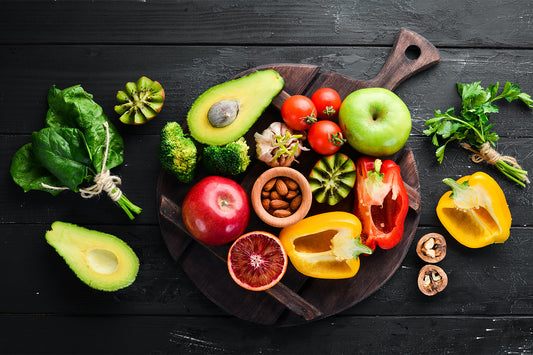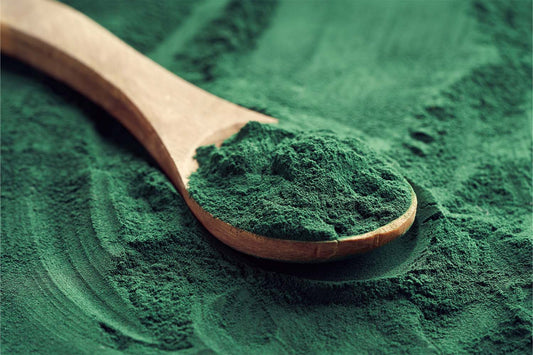“Where do you get your protein?” If you are on a plant-based diet, you are probably familiar with this question. This question makes sense if you are used to eating only animal protein. On a plant-based diet, it can be challenging to make sure you are getting the protein you need, but once you know all of your options, it is a walk in the park.
If you follow a plant-based or vegan diet, this guide will provide you with everything you need to know about getting your protein and getting the right protein.
What Is Protein?

Protein is a molecule that serves as one of the most basic foundations for life, as it is found in every single cell in our bodies. Protein is made up of a group of amino acids and helps support our bodily functions, from forming the structure of cells to helping them communicate.
We need proteins to support the function of our organs and tissues. They are especially important for muscle growth, tissue repair, and growth and development during childhood and adolescence. However, proteins have many other behind-the-scenes roles in our bodies.
Health experts recommend eating at least 0.8 grams of protein per kilogram of body weight per day. This translates to about 0.36 grams of protein per pound of body weight. Therefore, a healthy 200-pound individual needs about 72 grams throughout the day. If you are looking to build muscle, you may need closer to between 0.5 and 0.8 grams per pound of body weight, which would be 100 to 160 grams of protein for the same 200-pound individual.
Protein consumption is a complex topic among health experts, as there is plenty of research and debate surrounding questions about the best time to eat protein and if there is such a thing as too much protein. We may not know all the answers, but we know that protein is an important part of our diet at a foundational level, and getting enough protein is an excellent place to start.
However, if we are not consuming the right proteins, they may not be as effective as they should be, which is why it’s crucial to eat complete proteins.
What Is a Complete Protein?
Protein is a molecule that is built from amino acids. There are 20 amino acids, 9 of which your body cannot create. These amino acids must come from the foods we eat.
A complete protein is a type of protein that contains all the essential amino acids that your body needs and cannot create on its own. The complete list of the nine essential amino acids includes:
- Histidine
- Isoleucine
- Leucine
- Lysine
- Methionine
- Phenylalanine
- Threonine
- Tryptophan
- Valine
What Is Plant-Based Protein?
Plant-based protein is a food source derived from plants that provides considerable amounts of protein. There is a long list of plant-based protein sources, including legumes, nuts, seeds, whole grains, and green vegetables.
However, not all forms of plant protein are the same. Plant-based protein does differ from animal proteins. The most notable difference between plant-based and animal protein is that plant protein sources are often not complete proteins. Although there are plant-based complete proteins, there are many incomplete proteins as well, requiring you to be mindful of how you structure your diet.
The fewer complete protein options may make consuming animal protein more appealing, but consuming plant-based protein also offers admirable benefits. Plant-based foods are often more diverse in their nutrient profile than animal products.
For example, protein-rich plant foods like green vegetables also offer important phytonutrients and antioxidants that you cannot get from animal protein but support our general health and wellness.
Plant-based protein may also provide protein without fewer drawbacks. Consuming animal products like milk, beef, and eggs come with a tradeoff you shouldn’t overlook. Although these options are all high in protein, they are often also considerable sources of saturated fats and cholesterol. Plant-based foods rarely contain any saturated fats or cholesterol, making them better for your heart health.
When you know where to find your plant protein sources, you can enjoy all the benefits of animal protein, from supporting your daily energy levels to building healthy muscle.
What Are Good Sources of Plant-Based Complete Proteins?
Despite the benefits that come with consuming plant-based proteins, relying on them for complete proteins takes a bit of extra effort and thought. On a plant-based diet, you may have to spend more time searching for reliable sources of plant-based protein.
Fortunately, getting the protein you need doesn’t have to be difficult once you know which foods to look for. The following are some of the best sources of complete plant-based proteins.
Soy
Soy is probably the most important vegan protein source, as it is high in protein, provides all nine different amino acids, and is versatile enough to be prepared in a handful of ways. You have many options if you plan to incorporate soy as a part of your plant-based diet, as soy comes in many forms.
You can enjoy soybeans, also known as edamame, or you can consume soy in the form of tofu, soy milk, or tempeh. Soy is commonly used in many vegan or meat alternatives as well.
Not only is soy a complete protein, but it is also a dense form of protein. Soy-based foods offer large amounts of protein. For example,
- One cup of edamame offers 16.9g of protein
- A cup of soy milk has 6.3g of protein
- An ounce of cooked tempeh provides 5.1g of protein
- A quarter of a block of firm tofu has 12.8g of protein
Soy also has several other benefits, providing valuable nutrients like calcium, fiber, and antioxidants. Soy also provides phytoestrogens, which may support heart health, healthy bones, and a strong immune system.
Quinoa

Quinoa is a type of whole grain that provides all of the essential amino acids. Native to South America, there are over 120 types of quinoa, including white, yellow, and red varieties. Quinoa is one of the most notable forms of protein on a vegan diet. Since it is gluten-free, it is also great for those with gluten intolerances or forms of celiac disease.
Just one cup of cooked quinoa can provide a full 8 grams of protein. In addition to its high protein content, quinoa is also high in fiber and minerals like manganese, phosphorus, and magnesium.
Quinoa is cooked similarly to rice and can serve as a protein-dense substitute for rice in dishes like stir-fries and burrito bowls. It also works great as an addition to salads and soups.
Buckwheat
Maybe not the most exciting and flavorful food you can think of, but buckwheat is still an incredible source of complete protein. Buckwheat is a type of whole grain similar to quinoa; it is also sometimes referred to as a pseudocereal. One cup of buckwheat provides an impressive 22.5 grams of protein.
In addition to being an excellent source of protein, buckwheat is also high in fiber, rich in B vitamins, and abundant with minerals like manganese, magnesium, and copper. You can cook buckwheat just like quinoa or rice, but you can also prepare it like a breakfast porridge.
Protein Powder
If you need help incorporating complete proteins into your daily diet, a protein powder is an easy way to include them. Protein powders incorporate a healthy blend of amino acids to form an excellent source of complete protein.
Generally used as a substitute for whey protein, plant-based protein powders are usually formulated with ingredients like brown rice protein, pea protein, or soy protein. With these options, one 20-50g scoop can usually provide anywhere from 10 to 30 grams of protein.
These powders are excellent options for anyone who is trying to build muscle and wants to supplement their regular diet. A significant advantage of protein powders is that they are versatile and easy to add to your diet. You can mix the powder with water or plant milk for a nice protein shake, incorporate it into your baking recipes, or mix it with your morning oatmeal.
Seeds
Speaking of oatmeal, seeds are an excellent complete protein to mix in with your morning oats. Both chia seeds and hemp seeds are excellent forms of complete protein. A tablespoon of chia seeds provides about 3g of protein, while hemp seeds provide a little over 3g per tablespoon.
These small little seeds pack a major punch, making both types incredible superfoods. Chia seeds are rich in alpha-linolenic acid (ALA) omega-3 fats, fiber, and calcium. Meanwhile, hemp seeds are packed with important minerals like iron, phosphorus, and omega-6 fatty acids.
In addition to oatmeal, you can include these seeds in your smoothies or baking recipes.
Algae
If you are bored by the thought of getting your protein from plants that grow on land, then algae provides a compelling alternative. This aquatic plant offers such a potent source of complete protein that it may one day be a regular part of all our daily meals. For now, though, algae makes an excellent supplement to any diet, especially if you follow a plant-based lifestyle.
Algae comes in multiple forms. The most popular forms of algae that offer complete proteins are Spirulina and Chlorella — however, Nannochloropsis algae has higher essential and branched-chain amino acid contents than Spirulina or Chlorella. These types of algae are often referred to as superfoods. They provide a full amino acid profile and have an abundance of antioxidants, essential vitamins, and minerals. Altogether, algae is an incredibly unique source of complete, plant-based protein.
Algae supplements are often found in powder form, making them easy to incorporate into your daily diet. You can include these protein-rich powders in your smoothies, juice, or a bowl of yogurt.
What Makes Nannochloropsis Algae a Unique Complete Protein Source?

In addition to algae’s benefits as a complete protein, Nannochloropsis algae is also an excellent source of omega-3 fatty acids docosahexaenoic acid (DHA) and eicosapentaenoic acid (EPA). These omega-3 fatty acids help form the building blocks of cells in our bodies and influence how these cells interact with each other. Despite their importance, omega-3s can be hard to come by.
This challenge has important implications, as omega-3s offer many potential benefits, like:
- Supporting a healthy heart
- Supporting a healthy blood pressure
- Helping to maintain cholesterol levels already within the healthy range
- Supporting healthy joints
- Supporting general emotional wellness
- Help to maintain cognitive functions as we age, like memory and motor skills
Other sources of DHA and EPA omega-3s in a standard diet are oily, fatty fish, like sardines, mackerel, and salmon, or krill. People who prefer not to cook fish often use fish oil or krill oil supplements as a quicker and simpler alternative. Of course, fish and krill are off-limits for those on a plant-based or vegan diet — this is what makes algae so valuable.
Algae allows those on a plant-based diet to get a powerful source of omega-3 nutrients when they otherwise would not be able to. At iwi life, we use the nutrient-rich form of microalgae, Nannochloropsis, to include the incredible benefits of omega-3 fatty acids into one simple softgel. This type of algae is also made up of 50-55% protein in itself, so it has several benefits.
Omega-3 fatty acids also play an important role in how our bodies use protein, as they may support proper muscle protein synthesis. By supporting muscle protein synthesis, the omega-3 content in algae helps to support overall muscle growth so you can maximize the benefits of your protein intake.
How Else Can You Get Complete Proteins?
Despite the fact that plant-based proteins can be harder to come by than animal proteins, there is some good news. Although complete proteins are helpful, you only need to obtain some of your protein through them.
Alternatively, if you consume the right combinations of incomplete proteins in your diet, you can obtain all of the essential amino acids between them, and your body can then use them to form complete proteins.
By combining the following incomplete proteins, you can get a complete amino acid profile from your diet:
- Legumes and whole grains
- Nuts or seeds and whole grains
- Legumes with nuts or seeds
You can either eat these foods at the same time or spread them out across different meals. Even eating combinations of these foods throughout the day can allow you to obtain the complete proteins you need to support your body. Some excellent examples of food combos that can provide you with complete proteins include:
- Hummus with pita bread
- Peanut butter on whole-grain toast
- A salad with sunflower seeds and chickpeas
- Rice and beans
- A bean soup with quinoa
- A bean chili with crackers
- Pasta and lentils
These combinations support a healthy intake of complete protein and encourage you to expand the types of proteins you include in your meals instead of sticking to just one. It is always smart to include a variety of foods in your diet to maximize the different types of nutrients you gain.
How Can You Make the Most of Your Protein Intake?
Getting the right protein in your diet is crucial for promoting the healthy growth and function of your cells. Fortunately, there are plenty of excellent plant-based complete proteins to choose from to maintain a healthy protein intake.
With iwi life, it is easy to support your protein intake by helping your body put your protein to use. Each iwi life omega-3 supplement provides a full 250 mg of combined DHA and EPA to help you support your overall health and wellness.
Sources:
Quinoa | The Nutrition Source | Harvard T.H. Chan School of Public Health
The Complete Protein Foods List And Facts | Piedmont Healthcare
Production of Fatty Acids and Protein by Nannochloropsis in Flat-Plate Photobioreactors | PMC
















